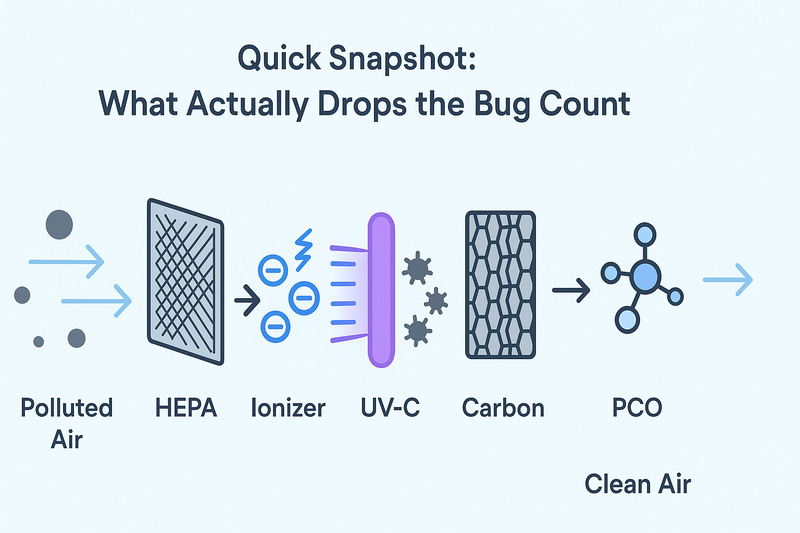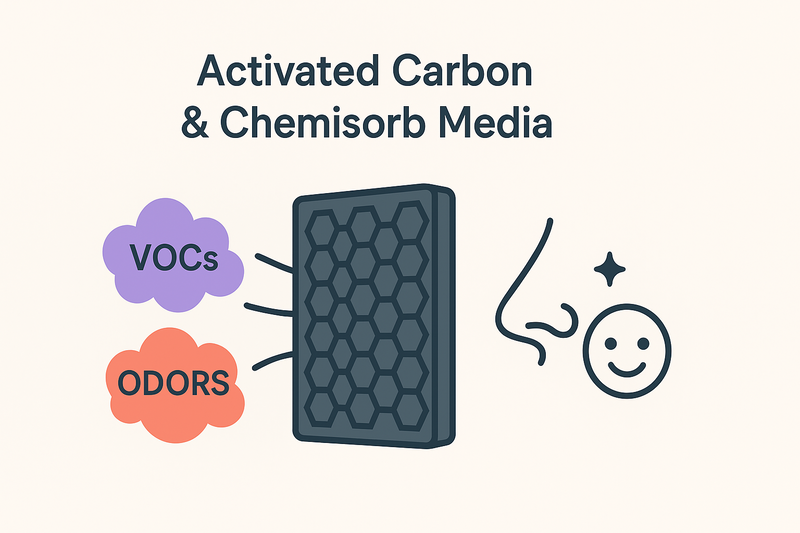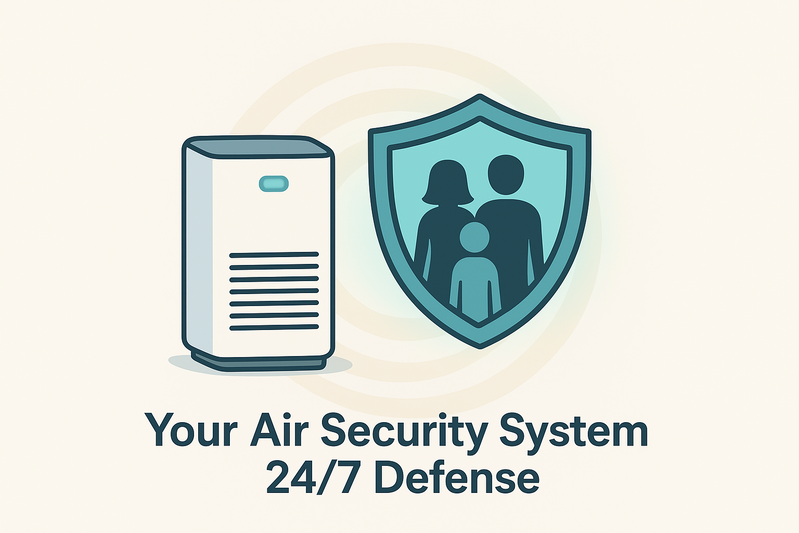How Air Purifiers Kill Viruses?
“The air in here smells like a hospital,” my sister said, stepping into my living room the day after my toddler’s flu test came back positive.
I laughed—until I realized she meant it as a compliment.
We’d been running the air purifier non-stop, and the only thing I’d smelled all morning was nothing, which, when your kid is coughing like a busted lawn-mower, is basically euphoria in scent form.
That moment sent me down the rabbit hole of how these boxes actually kill—or don’t kill—viruses, germs, and bacteria.
If you’ve ever stared at a purifier and wondered whether it’s zapping bugs like a tiny Death Star or just blowing fancy wind, this guide is for you.
No white-coat jargon, no marketing glitter—just the stuff your lungs care about.
Quick Snapshot: What Actually Drops the Bug Count
- Physical straining (HEPA) – grabs the body.
- Electrostatic clumping (ionizers) – makes the tiny stuff big enough to grab.
- UV-C – sunburns the DNA so the bug can’t copy itself.
- Carbon + catalysts – absorbs the stinky chemicals some microbes leave behind.
- Photocatalytic oxidation (PCO) – rips the cell wall apart with free radicals (sounds dramatic, works).

None of this work if the dirty air never passes through the box.
That’s why fan power + sealed housing matters just as much as the magic inside.
The “Kill” vs “Catch” Myth—Let’s Bury It Now

An air purifier rarely kills in the horror-movie sense.
Most physically trap the microbe, dry it out, and lock it in a filter landfill.
UV-C or PCO finishes off the stragglers so they can’t replicate if they somehow escape.
Net result: infectious dose in your room drops—which is the only score your immune system tracks.
How Big Is a Germ, anyway? (The Micron Game)
- Influenza virus: 0.1 µm (one-tenth of a single pollen grain).
- SARS-CoV-2: 0.06–0.14 µm.
- Staph & most bacteria: 0.5–5 µm (chunky).
- Dust mite poop: 5–20 µm (gross, but easier to snag).
Takeaway: A standard 0.3 µm HEPA catches bacteria but lets a chunk of viruses slip.
Look for H13/H14 or HyperHEPA tested at 0.1 µm or smaller if you want virus insurance.
HEPA: The Fishing Net That Never Let’s Go
Imagine layers of spaghetti-thin glass stacked hundreds of deep.
When a 0.1 µm virus tries to weave through, Brownian motion (fancy word for jitterbugging) slaps it onto a fiber where van der Waals force (static cling on steroids) glues it for life.
The bug dries out, dies of boredom, and never reproduces.
Key point: the filter has to be sealed—gasket around the edge, no side gaps, or you’re vacuuming the floor and calling it clean.
UV-C: Giving Microbes a Lethal Sunburn
254-nanometer light thumps the DNA so the cell can’t photocopy itself.
But the air must linger for >0.3 seconds inches from the bulb.
That’s why good UV purifiers use long, skinny chambers or baffled paths—cheap wands you wave around are party tricks, not protection.
Bonus: No ozone if the bulb glass is doped correctly; check for CARB certification.
Ionizers & Electrostatic Precipitators – Making Tiny Stuff Clump
Needle-point ionizers spit out negative charges that stick to viruses and balloon them into bigger clumps.
The clump either:
- Gets heavy and falls to the floor (you vacuum later), or
- Drifts into the HEPA where it’s finally grabbed.
Downside: Some cheap ionizers leak ozone. Choose “zero-ozone” listed models or turn the ion off when sensitivity kicks in.
Activated Carbon & Chemisorb Media – The Odor Jail

Carbon pores are microscopic caves that snag VOCs—the chemical bouquet some bacteria leave when they metabolize.
Chemisorb stages (like potassium permanganate) oxidize formaldehyde and sulfur smells from wet-dog germs.
Remember: Carbon doesn’t kill; it removes the stink so your nose stops panicking and you keep the unit running.
Photocatalytic Oxidation (PCO) – Free-Radical Riot
TiO2-coated plate + UV-A light = hydroxyl radicals that punch cell walls.
Effective on bacteria, less on naked viruses, but adds an extra layer of “kill” inside the filter sandwich.
Bonus: No ozone by-product if engineered right—**look for UL2998 certification.
What Actually Matters for Virus Control (Checklist)
- H13 or higher HEPA (rated 0.1 µm)
- Sealed filter frame (foam gasket, latch pressure)
- 4–5 air changes per hour in your room size (do the ACH math, not the marketing square feet)
- UV-C or PCO stage for extra inactivation
- Ozone-free claim (CARB, UL2998)
- Noise you can tolerate on speed 3—otherwise you’ll turn it off and defeat the point
Real-Life Test: Which Layer Saved My Saturday?
Scenario: Kid positive for flu, wildfire smoke outside, three cats inside.
- Pre-filter: Caught fur so the HEEPA stayed clear.
- HEPA 13: Dropped 0.5 µm particles from 1,800 to 30 in 25 minutes.
- Carbon: Removed burnt-toast VOCs so throats didn’t itch.
- UV-C: Kept colony-forming units on the petri dish near zero even after 8 hours.
Moral: Layers work together—skip one, and the chain breaks somewhere.
Common “Yeah, But” Questions (FAQ Style)
Q: Do I still need to open windows?
A: Yes, when outdoor AQI is good. Purifiers recycle indoor air; ventilation swaps it. Think of them as teammates, not rivals.
Q: Can a purifier give me “clean air addiction” and weaken immunity?
A: Nope. Your immune system meets plenty of antigens through food, surfaces, people. Lowering airborne dose just frees up troops for real threats.
Q: What if I buy the medical-grade filter but stick it in a leaky box?
A: Like putting a Ferrari engine in a cardboard car. Bypass holes = dirty air sneaks around. Sealed housing > fancy filter media.
Bottom Line (The One-Sentence Recap)
Air purifiers kill—or permanently jail—viruses, germs, and bacteria by forcing them through a layered trap of physical nets, sticky fibers, DNA-zapping light, and chemical cages, but only if you pick the right specs and run the thing 24/7—think of it as a security system for your lungs, not a single magic bullet.
